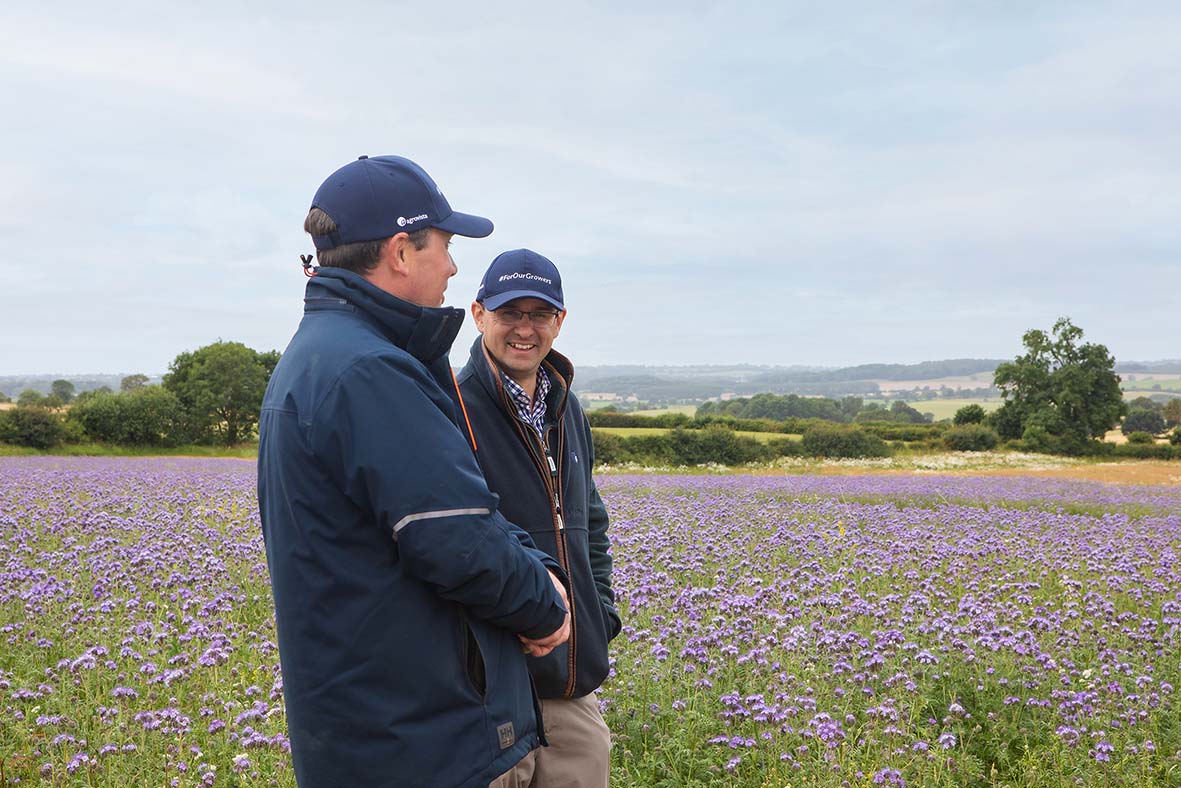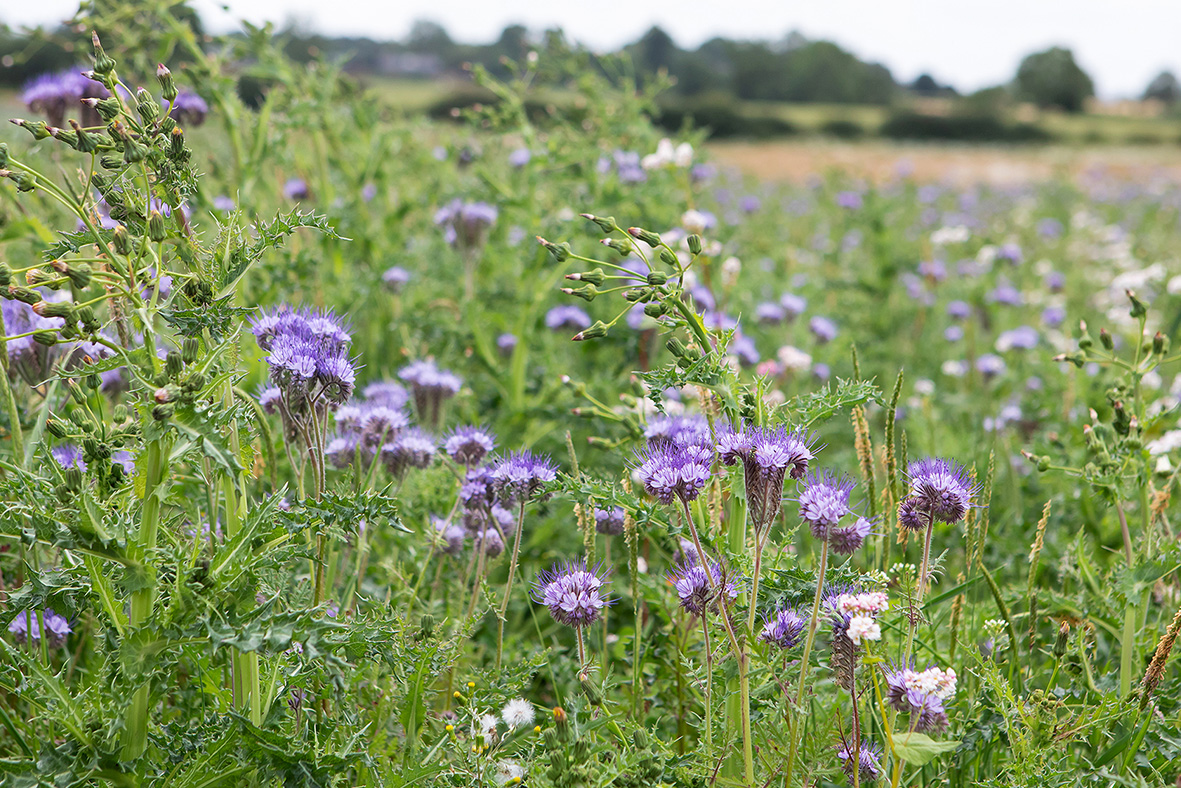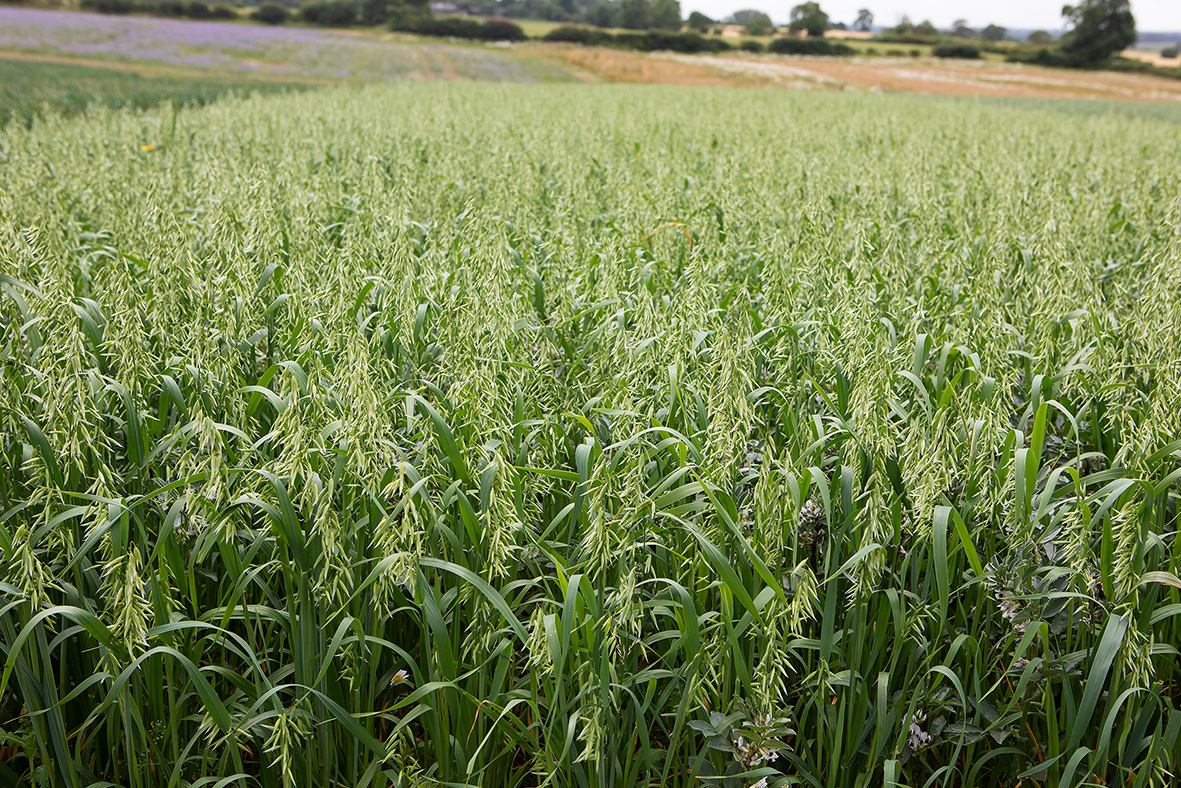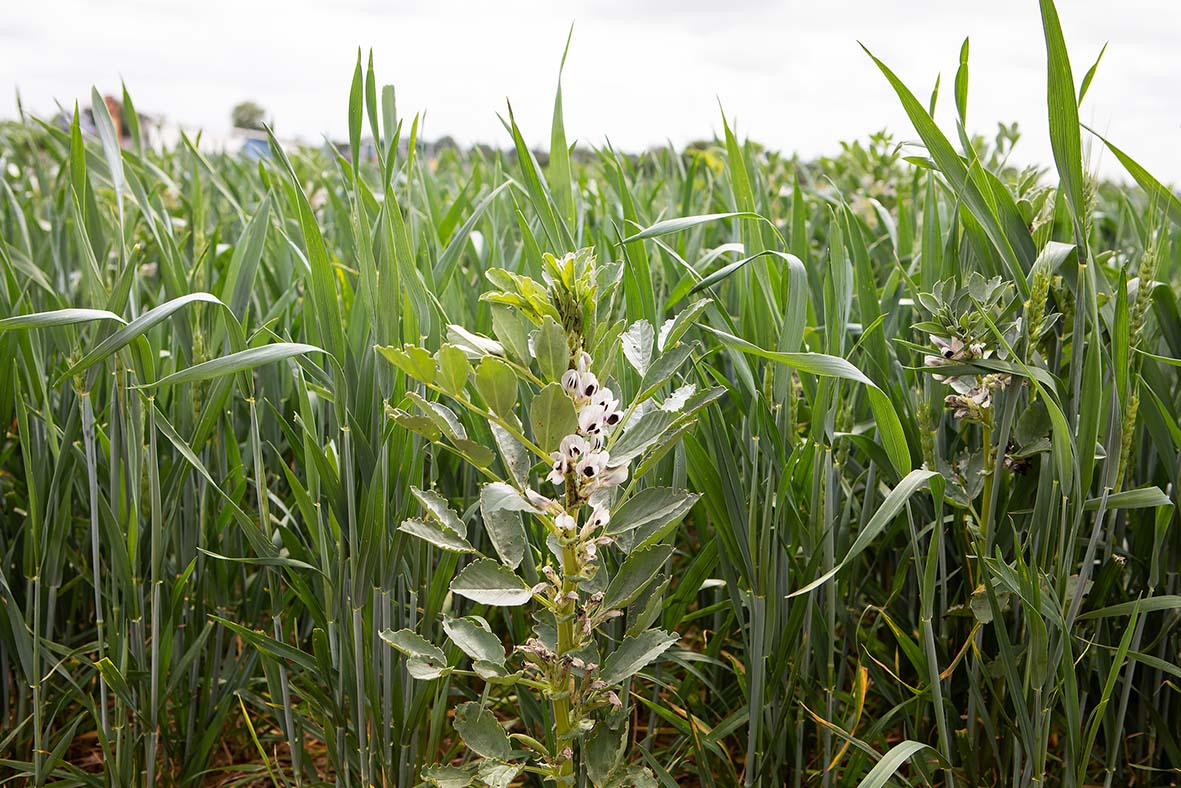Much of the work carried out at Lamport can attract valuable SFI payments. Over-winter cover crops, the mainstay of operations to control blackgrass and improve soil health, are currently worth £129/ha, but that’s just the start. Several other options that now attract payments under the scheme are under scrutiny.
Whole field SFI actions are proving difficult to integrate into rotations at Lamport due to the enormous blackgrass challenge.
Winter bird food (AHL2) and legume fallow (CNUM3), look tempting on paper, paying £853 and £593/ha/year respectively. But both plots, which were drilled in April, have been destroyed.
Hamish Wardrop, Agrovista’s rural consultancy national manager, says: “The winter bird food established OK but there was a mass of grass weeds as well, and the pressure was too high to continue with it on this site.
“The legume fallow also established reasonably well, but it suffered badly with slugs, flea beetle and weevil. And we also have grassweed pressure.”
This reinforces findings over the past three years, where legume fallow plots showed more blackgrass than anywhere else on the site.
“These actions can be a good choice in some situations, but you have to go in with your eyes open,” says Hamish. “We can't lose sight of what we are trying to achieve in bringing back first wheats into the rotation.”
Multi-species spring-sown cover crop
Could a spring-sown cover crop replace the spring cash crop that traditionally follows an autumn cover as an entry to winter wheat? What will it do for blackgrass, and will it pay better than the spring break?
Hamish is hoping to answer both those questions on a plot that started life as a pollen and nectar mix. This was switched to the multi-species spring crop option (SOH2) following a 2024 rule change that newly established pollen and nectar mixes could no longer be rotational, which would not have suited the Lamport rotation.
“The resulting mix of Phacelia, buckwheat, vetch, crimson clover, oxeye daisy and wild carrot is perhaps a bit exotic, but it meets the requirements of this action,” says Hamish.
“There are quite a lot of blackgrass heads in the plot, which was drilled in the middle of April, but we can live with that because the cover will be destroyed around harvest time and we will then establish an autumn cover crop followed by a spring cereal.
“Provided we keep the blackgrass seed on the surface and get it to germinate in the autumn cover crop, which will be sprayed off ahead of the spring crop, we should get a decent level of control. It has clearly done a job from an environmental perspective, attracting lots of pollinators.”


Low input cereals option
A low-input cereal action (AHW10) aims to create an open-structured cereal crop that encourages wildflower species to grow within it, providing habitat and summer foraging for birds, pollinators and other wildlife.
It pays £354/ha/year under SFI, whilst a further £129/ha is available for a preceding over-winter cover crop.
Technical manager Mark Hemmant says: “Herbicides are restricted and you have to sow the cash crop at a reduced seed rate. We chose spring oats and went at two-thirds rate, or 270 seeds/sq m, which allows some broad-leaved weeds to come through the top of the crop.
“We have to select carefully where to grow this action at Lamport, but we have achieved the aims; while there is a little bit of blackgrass coming through, if you are well on top of grassweeds and have a good rotation, it could be useful.”
Companion cropping – spring wheat and beans
The benefits of adding beans to a spring wheat crop at 10 seeds/sq m are also being assessed. That would attract a £55/ha companion crop payment under SFI for a seed cost of about £15/ha, and could help mitigate take-all.
“The net benefit of what you spend on bean seed compared to what you get back looks good, provided there are no adverse effects on blackgrass control or yield,” says Mark.
The beans were destroyed around flag leaf timing as some inputs are not approved for that crop, but the crops appear to have thrived.
“We know at Lamport that black oats in the cover crop aren’t enough to prevent take-all in a wheat-dominated rotation in an autumn like 2023,” he explains. “But if we introduce wheat plus beans in the spring, might the undoubted soil benefits that beans bring change things?”



